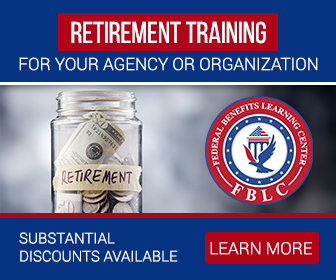Key Takeaways
-
Special category retirements like Law Enforcement Officers (LEOs) and Air Traffic Controllers (ATCs) offer powerful early retirement opportunities but come with unique financial and planning risks.
-
In 2025, understanding the intricate rules around annuities, supplements, and Medicare coordination is crucial to fully leveraging these retirements without unexpected setbacks.
Understanding Special Category Retirements in 2025
Special category retirements remain some of the most attractive in public sector careers. As a Law Enforcement Officer, Air Traffic Controller, firefighter, or nuclear materials courier, you may retire earlier and access benefits others must wait years longer to enjoy.
- Also Read: Dropping FEGLI Sounds Smart—Until You Realize What It No Longer Covers After Retirement
- Also Read: Hitting 20 Years in Law Enforcement? Here’s What You Can Expect From Your Pension
- Also Read: Think You Understand FERS? These Three Rules Still Confuse Even Longtime Government Employees
Who Qualifies for Special Category Retirement
In 2025, eligibility is strictly regulated. You generally must:
-
Complete 20 years of “covered service” (positions classified under special retirement rules).
-
Meet minimum age requirements, typically age 50 with 20 years of covered service or any age with 25 years.
-
Be in a covered position at retirement.
Covered service includes duties involving law enforcement, firefighting, air traffic control, and certain protective occupations.
How the Annuity Formula Works
Special category employees under FERS receive a more generous calculation for their basic annuity:
-
1.7% of the high-3 average salary for each of the first 20 years.
-
1% of the high-3 average salary for any additional years of service.
This enhanced formula increases your monthly benefit compared to regular FERS retirees who typically receive 1% per year.
The Power of the FERS Special Retirement Supplement
Retiring early often means facing several “income gap” years before you qualify for Social Security. To bridge that gap, many special category retirees are eligible for the FERS Special Retirement Supplement.
-
The supplement mimics your age-62 Social Security benefit based only on your FERS years.
-
It is payable until the month you turn 62.
-
Earnings above the Social Security limit ($23,480 in 2025) can reduce the supplement.
Managing your post-retirement earnings carefully is key to preserving this important income source.
Why Health Insurance Planning Is Critical
FEHB (Federal Employees Health Benefits) coverage continues into retirement if you meet eligibility requirements. However, in early retirement before Medicare kicks in at 65, you must:
-
Pay the full FEHB premium from your annuity.
-
Navigate potential gaps in coverage if you miscalculate.
-
Understand that certain supplemental benefits become increasingly important as you age.
Once you turn 65, coordinating FEHB with Medicare becomes essential to control healthcare costs. Most retirees elect Medicare Part A (premium-free for most) and often Part B (standard premium $185 in 2025).
Unique Financial Risks You Face
While the idea of retiring in your 50s can be exciting, there are significant risks you must prepare for:
-
Longevity Risk: Retiring at 50 or 55 could mean financing 30-40 years of retirement.
-
Healthcare Inflation: Medical expenses tend to rise faster than general inflation.
-
COLA Lag: FERS annuities receive Cost-of-Living Adjustments, but if inflation exceeds 2%, COLAs are reduced under a “diet COLA” formula.
-
Social Security Timing: Although the Special Retirement Supplement helps, your actual Social Security claiming decisions at age 62 or later can dramatically affect your long-term income.
Early Retirement Incentives vs. Penalties
In certain cases, early-out or “early retirement” offers may come your way. These can be enticing, but weigh them carefully:
-
If you do not meet the full 20 years of covered service, you may face a reduced annuity.
-
Supplements may not be available if you retire under a Voluntary Early Retirement Authority (VERA) without meeting eligibility.
-
Health insurance continuation rules could be affected if you leave before meeting minimum requirements.
Evaluating incentives against lifetime costs is critical.
Retirement Timing Matters More Than You Think
Choosing exactly when to retire matters significantly for special category employees:
-
Retiring mid-year may affect annual leave lump sum payments.
-
Retiring early in the fiscal year can maximize leave accumulation.
-
Retiring at your Minimum Retirement Age (MRA) versus earlier could open different income options.
Proper planning around these key milestones ensures you maximize your benefits and minimize unnecessary costs.
Mandatory Retirement Age Impacts
Unlike regular public sector employees, special category employees face mandatory retirement ages:
-
Law Enforcement Officers and firefighters typically must retire by age 57.
-
Air Traffic Controllers usually must retire by age 56.
Mandatory retirement ensures younger, physically fit workers fill demanding roles. However, if you reach mandatory retirement without meeting full eligibility, there are complex calculations that may affect your final annuity.
Survivor Benefits and Disability Protections
Special category retirements often include enhanced survivor benefits:
-
A survivor annuity can be provided for a spouse or eligible child.
-
Disability retirement protections are stronger for those injured in the line of duty.
Understanding these protections ensures you safeguard your family’s financial security.
Deferred and Postponed Retirement Options
If you leave a covered position before reaching retirement eligibility, you may have other choices:
-
Deferred Retirement: If you have at least five years of service, you can claim a retirement annuity later.
-
Postponed Retirement: If you meet MRA with 10 years of service but not full eligibility, you may postpone annuity receipt to reduce penalties.
These options can preserve your benefits but may come with healthcare coverage trade-offs.
The 2025 Environment for Special Category Retirees
Several 2025-specific factors add complexity to your planning:
-
FEHB premiums have risen an average of 11.2% compared to 2024.
-
Medicare Part B premium stands at $185 monthly.
-
Social Security full retirement age for those born in 1963 is 67.
-
The FERS Special Retirement Supplement earnings limit is $23,480.
Keeping these numbers in mind ensures you plan realistically rather than relying on outdated assumptions.
What to Watch Out For During Retirement
Several potential pitfalls can threaten your retirement security if you are not proactive:
-
Working after retirement: A second career can reduce your FERS Supplement and even affect your Social Security benefit if you claim early.
-
TSP Withdrawal Mistakes: Poor withdrawal strategies from the Thrift Savings Plan can trigger penalties, taxes, or early depletion.
-
Healthcare Timing Errors: Missing deadlines to enroll in Medicare can result in lifelong penalties.
-
Underestimating COLA Effects: Inflation pressures may erode your purchasing power if you rely solely on your annuity.
Planning Tips for 2025 and Beyond
Success as a special category retiree comes from planning, not luck. Here are key moves to consider:
-
Work with a licensed professional listed on this website to build a retirement income strategy.
-
Understand exactly when and how your FERS Special Retirement Supplement will phase out.
-
Analyze your TSP balance and set a sustainable withdrawal rate.
-
Plan for Medicare enrollment at least six months before your 65th birthday.
-
Review your survivor election options carefully before finalizing retirement paperwork.
-
Revisit your plan annually, especially after significant cost-of-living adjustments or healthcare premium increases.
Securing Your Retirement Future in 2025
Special category retirements for Law Enforcement Officers, Air Traffic Controllers, and others remain among the strongest public sector benefits. Yet in 2025, these powerful retirements come with evolving risks that demand more attention than ever before. Planning ahead, understanding the impact of mandatory retirements, and coordinating healthcare and income streams are crucial.
To make the most of your well-earned benefits while protecting against potential pitfalls, get in touch with a licensed professional listed on this website for personalized retirement planning advice.









